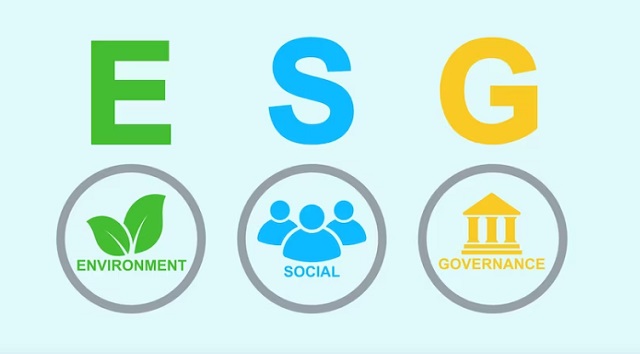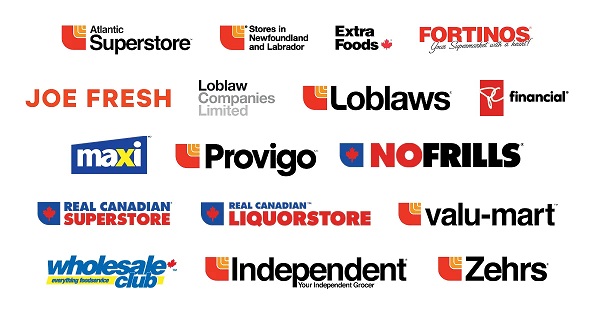Business
ESG doctrine and why it should not be adopted in professional organizations

From the Frontier Centre for Public Policy
By Graham Lane | Ian Madsen
The following introductory comments by Ian Madsen, Senior Policy Analyst, Frontier Centre for Public Policy provide background on Graham Lane whose attached letter to CPA Manitoba strongly criticizes that organization’s embrace of ESG.
Graham Lane is a retired CA and has had a multifaceted professional career spanning almost 50 years in the public and private sectors of seven provinces as a Senior Executive and Consultant.
In the public sector, before concluding his career as the Chairman of the Manitoba Public Utility Board (PUB), he consulted for three provincial governments and was employed by four provinces. In Manitoba, he was the CEO of Credit Union Central, bringing in online banking, a Vice-President of Public Investments of Manitoba, the interim President of Manitoba Public Insurance (MPI), reorganizing the corporation after its massive losses of 1986, a Vice-President of the University of Winnipeg, and the CEO of the Workers Compensation Board, restructuring the insurer and returning it to solvency. His experience with Crown Corporations goes well beyond Manitoba, he was the Comptroller of Saskatchewan’s Crown Investments Corporation, and a consultant reviewing government auto insurance in BC and workers compensation in Nova Scotia. He received the gold medal in Philosophy as an undergraduate, and a Paul Harris Fellowship from Rotary International for excellence in vocational service. Throughout his career, and wherever he worked, consulted or volunteered, he maintained an external objectivity. In recent years the Frontier Centre for Public Policy has been honoured by his presence of the Centre’s Expert Advisory Panel where he has been able to share his extensive public and private sector operations knowledge.
Environmental, Social and Governance Standards, so-called ‘ESG’, and scoring arose from ‘Responsible Investing’ efforts in the 1970’s and 1980’s. Institutional and other investors sought to influence corporations that were seen to be involved in, first, the Vietnam War, and, later on, in conducting business in Apartheid-era South Africa. Since then, the movement has morphed, now evolved into ESG.
ESG is essentially a covert way of exerting control over public companies by means other than buying control in the stock market. It is a ‘so-called’ ‘Social Justice’ movement. It seeks to impose non-market ideology on publicly traded companies, such as ‘Green Energy’ and ‘Diversity, Equity and Inclusion’, or, ‘DEI’. The latter two are the main goals of the effort, and are divisive and destructive. There are three paths that this crusade takes: regulatory, professional, and institutional.
The regulatory one is to compel governments to require that ESG standards be applied. This can occur through regulatory agencies such as the Ontario Securities Commission, the most powerful such body in Canada, or through its sister regulatory bodies in other provinces and territories. Federal and provincial legislation can also be passed and implemented to force some or all ESG-related strictures upon corporations.
This institutional path exerts influence upon the largest investors in Canada: public pension plans, such as the Canada Pension Plan and its CPP Investment Board, Quebec’s Caisse de depot et placements, which does the same for enrolees in Quebec; the federal Public Service Pension Plan, Ontario Teachers; and other provincial and professional pension plan investment bodies. Many, if not all of them, to a greater or lesser extent, have already agreed to and endorse ESG ‘principles’, and now attempt to induce the companies they invest in to subscribe to those edicts.
The professional path is, perhaps, the most pernicious. ESG scoring and rating are akin to accounting and financial reporting and analysis, so the professional bodies responsible for those things, such as provincial and national accounting professionals associations, and national and international associations of financial analysts, such as the Chartered Financial Analysts Institute, have begun to adopt ESG regimens.
However, ESG scoring is not just harmful, it is wildly subjective and susceptible to inaccuracy. ESG evolved from Marxist notions of ‘equity’. It is aligned with collectivist, non-market ideology. Transferring much or most managerial decision-making to those with neither direct expertise nor responsibility for its consequences would be irresponsible, an attack on capitalism itself.
Informed and strong opposition, as in the following letter from 2023 by Graham Lane, to the President of the Manitoba office of the Chartered Professional Accounts, should be heeded if citizens, taxpayers, investors and society at large want to avoid the Canadian economy becoming dominated by and managed by ESG criteria. These diverge radically from traditional proven fiduciary and corporate stewardship standards and principles – in favour of ‘Social Justice’ approved outcomes – which potentially damage or destroy returns for pension plan members, and other indirect and direct investors and the economy as a whole.
Ian Madsen
Senior Policy Analyst
January 4, 2024
Text of letter begins below:
Graham Lane, CPA CA (retired)
xxx (address withheld)
Winnipeg, MB
Geeta Tucker, FCPA, FCMA
President and CEO
CPA Manitoba Office
1675 – One Lombard Place
Winnipeg, MB
R3B OX3
August 26, 2023
Re: ESG courses and accreditation, CPA – “A New Frontier: Sustainability and ESG for CPAs and business professionals” (CPA Canada Career and Professional Development)
Dear Ms. Geeta Tucker:
I recently read, with concern, that the association is offering ESG ‘training’, towards immersing members in validating the Environmental Social Governance – ESG’ -movement’. (“A New Frontier: Sustainability and ESG for CPAs and business professionals.”) I also note, with further concern, a supporting column published on the subject (July/August 2023 Pivot CPA magazine). Our profession and members should ‘think twice’ before ‘jumping in’.
“ESG” stands for environment, social and governance. ESG investors aim to buy the shares of companies that have demonstrated their willingness to improve their performance in these areas. ESG is an acronym that refers of environmental, social, and governance standards that socially conscious investors use to select investments. These criteria consider how well public companies safeguard the environment and the communities where it works, and how they ensure management and corporate governance met high standards. For many people, ESG investing is more than a three-acronym. It’s a practical, real-world process for addressing how a company serves all its stakeholders: workers, communities, customers, shareholders and the environment. ESG offers one strategy for aligning your investment with your values, it’s not the only approach.”
But, the ESG ‘movement’, originally driven by good intentions, has been co-opted by lobbyists, special interest groups, and various NGOs. Recent reviews have revealed ESG’s lackluster performance in creating meaningful environment change, and others have highlighted chronic abuse of flawed methodologies.
ESG has gradually suffused the business and finance world, from its origins in academia and the ‘activist’ movements of various ‘social justice’ interest groups. Now, through the actions of provincial and national CPA bodies, our profession is validating and endorsing the central tenets and precepts of ESG valuation, which is misguided and harmful. ESG is antithetical to the aims of the accounting profession, which is, in part, to give honest, objective and rigorous appraisal of the assets, liabilities, and the profit and cash generating capacity of firms. Risk factors and externalities, including environmental issues, are already covered by GAAP and IFRS standards in financial reporting.
While the proponents of ESG promote it as a means of providing a fuller perspective on important aspects of a firm’s place in society, its community, and the ecosystem, and of its handling of other ‘stakeholders’, who are neither shareholders nor managers of a firm, it does not. In fact, by dubiously evaluating those other aspects of a firm’s status, it badly serves investors by creating possibly devastating conflicts and contradictions. This could imperil a firm and its ability to act autonomously towards providing goods and services to the public, jobs to its employees, and dividends (or capital gains) to its owners (ultimately, the public).
The problem of ESG evaluation and its ‘scoring’ are well-known. There is a lack of consistent standards and objectivity, including those of quantitative metrics that are logical and germane. ESG’s principles are dedicated to diverting and subverting top management; i.e., by substituting other ‘stakeholder’ concerns or aims from those of the firm – which is, principally, to seek short-term and long-term profitability and viability, subject to the constraints of laws, regulations, and physical limitations.
It is important to recall that ESG’s origins were in social activism, with the ‘S’ linked to anti-Apartheid movements on university campus and shareholders’ meetings in the 1980’s and ‘90’s. Then the ‘S’ was ‘Responsible Investing’ – an attempt to isolate and boycott the then-racist regime in South Africa. Then, by bringing the-apartheid regime to the negotiating table, with representatives of the disenfranchised opposition, eventually, it brought to an end to Apartheid itself.
Efforts should continue to draw attention to ‘conflict diamonds’, and minerals being extracted by indentured children and adults in the Democratic Republic of the Congo, along with the continuing oppression of minority groups in regions of China. For these situations, and, other places around the world where there are violent or corrupt regimes, western companies should be careful as to their dealings. Yet, these problems are generally already noted as business risks in proper, professional, corporate reporting, and are also subject to the law and multilateral guidelines and sanctions.
The ‘Environmental’ component of ESG is, perhaps, the primary one that the anti-capitalist movement have been most preoccupied with. It, the movement, accepts entirely, and bases its ideology on, presumptions that are not, despite media rhetoric, accurate. It is not true that global temperatures that are unadjusted or otherwise manipulated by un-objective persons are rising.
Nor is rising temperatures are ‘entirely’ due to higher levels of greenhouse gases in the atmosphere. The level of greenhouse gases in the atmosphere is not the most important factor in the direction, or magnitude, of any warming temperatures that might occur. Nor do any of some vaunted climate models predict (at least with any degree of certainty) what temperatures will be anywhere on the planet, let alone on average. Such efforts have repeatedly provided false projections.
Media and academic pundits have cited heat waves, or other events, as evidence of the tangible effects of purported warming, but these have been anecdotal and ignored other events, with contradictory evidence in other regions. Past predictions of ice cap and glacier melting, desertification, and more and stronger storms and other dire events, have yet come to naught.
Another fraught part of the ‘E’ in ESG scoring is determining ‘Scope 1, 2 and 3’ GHG emissions. The first one, ‘Scope 1’, is not ‘terribly difficult’ to do, but the other two Scopes 2 and 3, need to delve into what suppliers, customers and others do with the goods or services of the subject firm. These would be extremely difficult to determine let alone accurately quantify – and can be very expensive and/or unreliable to even attempt to calculate. At best, such tests might also give a distorted impression of an environmental impact – even ‘damage’ ’ that the firm may, or may not be, imparting.
Finally, the whole ‘Green Transition’ has become a rent-seeking lobby, attempting to capture government and its tax dollars. Their proponents’ supposition of touted ‘benefits’ of solar panels, wind turbines, electric vehicles and batteries – drastically altering or decimating the conventional energy, transportation and agriculture industries – are often erroneous or fraudulent, ignoring the full costs, financial and environmental, of their proposals.
The ’G’, ‘Governance’, part of ESG is also elusive and amorphous. While some of it has to do with the accountability of upper management, that is already covered by the responsibility of the Compensation, Nomination and Succession committees of the Boards of Directors (of all but the smallest companies), and also by regulations and supervision of applicable provincial Securities Commissions. Any malfeasance by managers or other employees, or by governments or other overseas organizations, involving bribery or other crimes, is covered by laws already. Engagement with ‘less-than-perfect’ regimes overseas is unavoidable for some industries, and it is unlikely that any quantitative scoring of such interactions or presence would or could be validly determined.
Another aim of the ESG effort is to compel companies to commit to some form of DEI: ‘Diversity, Equity and Inclusion’.
In practice, DEI cannot merely be about outreach to historically disadvantaged or under-represented communities, but cqn lead to active discrimination against employees or potential hires who are not members of those communities. Commitment to hiring and promotion goals in those communities is legally questionable, but that is almost the least of the problems DEI entails. One of the worst is about the engagement of DEI directors, or outside DEI consultants, to conduct divisive and stressful DEI training, such as sensitivity and ‘microaggression’ awareness and role-playing exercises.
ESG scoring that rewards destructive efforts would or could make companies and organizations alter their operation to appear to ‘earn’ higher scores, while actually damaging their ability to foster a productive work environment, retain qualified staff, generate an adequate rate of return on invested capital, or survive as a going concern.
Another element of the ‘G’ in ESG is to try to inject parties other than shareholders or management into Governance, diluting shareholders’ control – which could or would obscure responsibility and accountability, and could badly delay or derail important capital allocation and other corporate decisions. These groups are suppliers, customers, those affected by the operations or products or services of the company, and communities in which the company operates, and potentially others. A covert attempt to subvert capitalism itself, and the market economy, might happen.
ESG advocates have engendered support by claiming that higher-ESG rated firms, and the shares in those firms, perform better than the ‘typical’ company. However, that is untrue. Studies of Canadian and American ESG and ‘Ethical’ funds (over the past five, ten, and even longer time periods) indicate that they underperform index funds; i.e., funds that invest in the entire market of large firms traded on a stock exchange.
Any funds that claim otherwise are consciously, or unconsciously investing in a style tilted to certain sectors; quite often the low-environmental impact IT sector. Such companies can perform well in a shorter time frame. When examining ESG funds, moreover, it often turns out that they invest in most of the same companies as the index funds – though perhaps with a higher management fee. Also, they could have peculiar criteria for higher ESG ratings, most glaringly rating some oil companies higher than other apparently ‘Green’ ones, such as Tesla. Elimination of low-ESG rated firms from investing can concentrate risk by narrowing diversification, thus violating a central, crucial tenet of investment risk management.
ESG has gained considerable support from corporate interests, including prominent institutional investors such as Blackrock (Chairman, Larry Fink) and public pension funds. While such ‘responsible investing’ may have a glowing aura, it can also have a pernicious effect of trying to coerce corporate management to attain public policy that ‘progressive’ politicians, academics, think tanks and other operatives believe are paramount. Those goals can supersede the shareholder returns that are vital to guarantee beneficiaries of pension funds and other institutional investment portfolios receive their promised benefits. This could violate the fiduciary duty of investment portfolio managers, which is to strive for the best risk-adjusted return that they can. (Several ‘green energy’ companies’ share prices have declined, some drastically in the past year.)
Several state governments in the United States have prohibited ESG-based investment.The Saskatchewan and Alberta provincial governments may also intercede if this ‘movement’ strikes at the vital energy industry.
Giving the considerable reputational power of CPAs, for the Association to ‘educate’ its members in a potentially destructive endeavour, such as ESG evaluation, is a mistake. It would be folly to add yet more risk and damage by validating and promoting ESG.
ESG advocates are now on the defensive, from information available recounted herein. Shouldn’t our profession review its decision to promote ESG?
Yours Sincerely,
Graham Lane, CPA CA (retired)
Former Chairman, Manitoba’s Public Utilities Board
c.c. Pamela Steer, CEO, President and CEO, CPA, Canada
Paul Ferris, Editor, Pivot, CPA Canada
Business
Loblaws Owes Canadians Up to $500 Million in “Secret” Bread Cash

Yakk Stack
(Only 5 Days Left!) Claim Yours Before It’s GONE FOREVER
Hey, all.
Imagine this…you’re slicing into that fresh loaf from Loblaws or just making a Wonder-ful sammich, the one you’ve bought hundreds of times over the years, and suddenly… ka-ching!
A fat check lands in your mailbox.
Not from a lottery ticket, not from a side hustle – from the very store that’s been quietly owing you money for two decades of illegal price fixing.
Sound too good to be true?
It’s real.
It’s court-approved.
And right now, on December 7, 2025, you’ve got exactly 5 days to grab your share before the door slams shut. Don’t let this slip away – keep reading, feel that spark of possibility ignite, and let’s get you paid.
Back in 2001, you were probably juggling work, kids, or just surviving on that weekly grocery run. Little did you know, while you were reaching for the President’s Choice white bread or those golden rolls, Loblaws and their cronies were playing a sneaky game of price-fixing. They jacked up the cost of packaged bread across Canada – every loaf, every bun, every sneaky sandwich slice. For 20 years. From coast to coast to coast.
And now…the courts have spoken. $500 million in settlements to make it right. That’s not pocket change – that’s your money, recycled back into your life.
Given the number of people who will be throwing in a claim…this ain’t gunna be life-changing cash…but also, given the cost of food in Canada, it’s better than sweet fuck all, which you will receive by NOT doing this.
If you’re a Canadian resident (yep, that’s you, unless you’re in Quebec with your own sweet deal), and you’ve ever bought bread for your family – not for resale, just real life – between January 1, 2001, and December 31, 2021… you’re in.
No receipts needed.
No fancy proofs.
Just you, confirming your story, and boom – eligible.
Quick check: Were you under 18 back then?
Or an exec at Loblaw?
Nah, skip it.
But for the rest of us everyday schleps…Jackpot.
Again…the clock’s ticking on this.
Claims opened on September 11, 2025, and slam shut on December 12, 2025.
That’s this Friday.
Payments roll out in 2026, 6-12 months later, straight to your bank or mailbox.
Here’s what you need to do…
- Breathe deep, click → HEREQuebec frens →HERE
- 10 second form that’s completed by your autofill…30 seconds off of a mobile device.
- Hit submit and wait for that sweet cash to hit your account.
Again…this won’t be life saving money and most certainly ain’t gunna hit your account before Christmas.
And before you go out an Griswald yourself into a depost on pool in the backyard…you may only end up with enough cash for the Jam-of-the-Month…the gift that truly does give, all year round…just be a little patient.
If you end up with a couple of backyard steaks in time for summer…
Some treats for the children or grandchildren…
Maybe just a donation to the foodbank…
This is what’s owed to you. Your neighbors. Friends. Family.
Take advantage!
Banks
To increase competition in Canadian banking, mandate and mindset of bank regulators must change

From the Fraser Institute
By Lawrence L. Schembri and Andrew Spence
Canada’s weak productivity performance is directly related to the lack of competition across many concentrated industries. The high cost of financial services is a key contributor to our lagging living standards because services, such as payments, are essential input to the rest of our economy.
It’s well known that Canada’s banks are expensive and the services that they provide are outdated, especially compared to the banking systems of the United Kingdom and Australia that have better balanced the objectives of stability, competition and efficiency.
Canada’s banks are increasingly being called out by senior federal officials for not embracing new technology that would lower costs and improve productivity and living standards. Peter Rutledge, the Superintendent of Financial Institutions and senior officials at the Bank of Canada, notably Senior Deputy Governor Carolyn Rogers and Deputy Governor Nicolas Vincent, have called for measures to increase competition in the banking system to promote innovation, efficiency and lower prices for financial services.
The recent federal budget proposed several new measures to increase competition in the Canadian banking sector, which are long overdue. As a marker of how uncompetitive the market for financial services has become, the budget proposed direct interventions to reduce and even eliminate some bank service fees. In addition, the budget outlined a requirement to improve price and fee transparency for many transactions so consumers can make informed choices.
In an effort to reduce barriers to new entrants and to growth by smaller banks, the budget also proposed to ease the requirement that small banks include more public ownership in their capital structure.
At long last, the federal government signalled a commitment to (finally) introduce open banking by enacting the long-delayed Consumer Driven Banking Act. Open banking gives consumers full control over who they want to provide them with their financial services needs efficiently and safely. Consumers can then move beyond banks, utilizing technology to access cheaper and more efficient alternative financial service providers.
Open banking has been up and running in many countries around the world to great success. Canada lags far behind the U.K., Australia and Brazil where the presence of open banking has introduced lower prices, better service quality and faster transactions. It has also brought financing to small and medium-sized business who are often shut out of bank lending.
Realizing open banking and its gains requires a new payment mechanism called real time rail. This payment system delivers low-cost and immediate access to nonbank as well as bank financial service providers. Real time rail has been in the works in Canada for over a decade, but progress has been glacial and lags far behind the world’s leaders.
Despite the budget’s welcome backing for open banking, Canada should address the legislative mandates of its most important regulators, requiring them to weigh equally the twin objectives of financial system stability as well as competition and efficiency.
To better balance these objectives, Canada needs to reform its institutional framework to enhance the resilience of the overall banking system so it can absorb an individual bank failure at acceptable cost. This would encourage bank regulators to move away from a rigid “fear of failure” cultural mindset that suppresses competition and efficiency and has held back innovation and progress.
Canada should also reduce the compliance burden imposed on banks by the many and varied regulators to reduce barriers to entry and expansion by domestic and foreign banks. These agencies, including the Office of the Superintendent of Financial Institutions, Financial Consumer Agency of Canada, Financial Transactions and Reports Analysis Centre of Canada, the Canada Deposit Insurance Corporation plus several others, act in largely uncoordinated manner and their duplicative effort greatly increases compliance and reporting costs. While Canada’s large banks are able, because of their market power, to pass those costs through to their customers via higher prices and fees, they also benefit because the heavy compliance burden represents a significant barrier to entry that shelters them from competition.
More fundamental reforms are needed, beyond the measures included in the federal budget, to strengthen the institutional framework and change the regulatory mindset. Such reforms would meaningfully increase competition, efficiency and innovation in the Canadian banking system, simultaneously improving the quality and lowering the cost of financial services, and thus raising productivity and the living standards of Canadians.
-

 Automotive1 day ago
Automotive1 day agoTrump Deals Biden’s EV Dreams A Death Blow
-

 Automotive1 day ago
Automotive1 day agoCanada’s EV Mandate Is Running On Empty
-

 Business16 hours ago
Business16 hours agoWhy Does Canada “Lead” the World in Funding Racist Indoctrination?
-

 Focal Points1 day ago
Focal Points1 day agoPharma Bombshell: President Trump Orders Complete Childhood Vaccine Schedule Review
-

 Alberta1 day ago
Alberta1 day agoPremier Smith: Canadians support agreement between Alberta and Ottawa and the major economic opportunities it could unlock for the benefit of all
-

 Media16 hours ago
Media16 hours agoThey know they are lying, we know they are lying and they know we know but the lies continue
-

 Alberta2 days ago
Alberta2 days agoA Memorandum of Understanding that no Canadian can understand
-

 Censorship Industrial Complex2 days ago
Censorship Industrial Complex2 days agoFrances Widdowson’s Arrest Should Alarm Every Canadian












